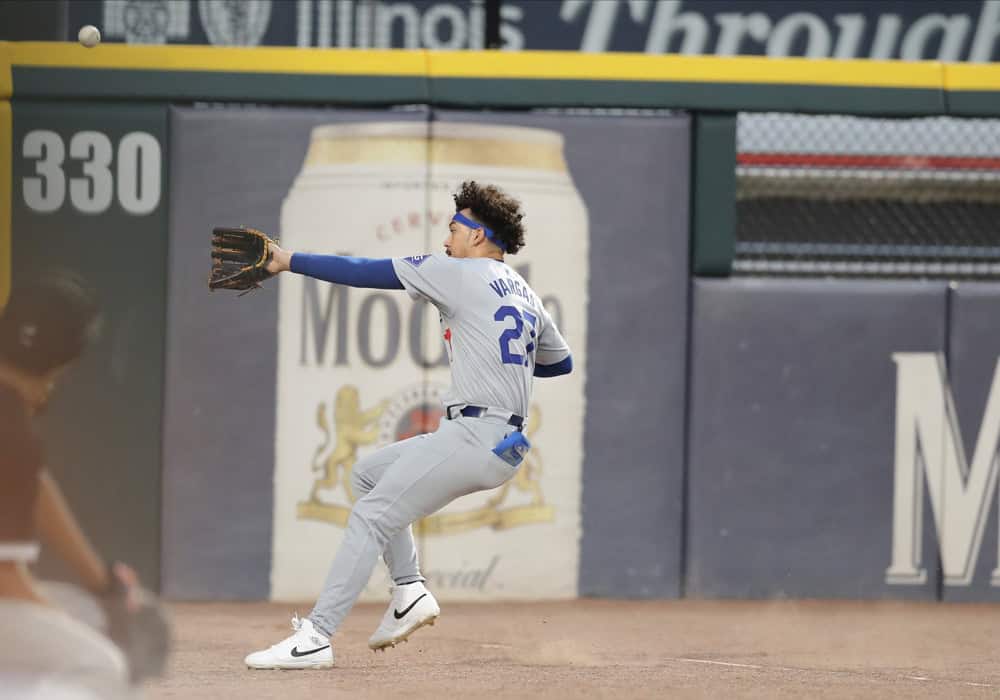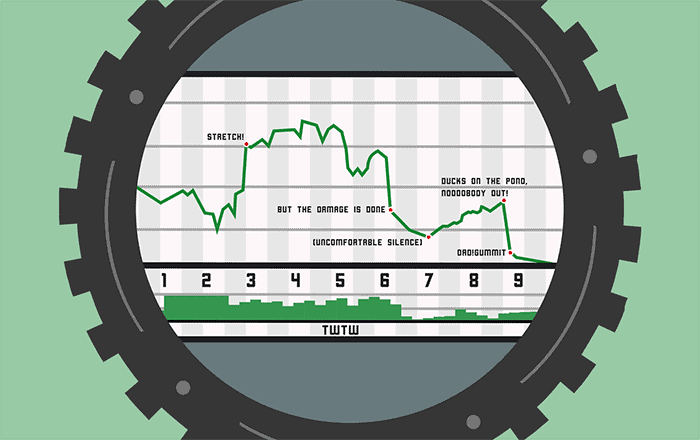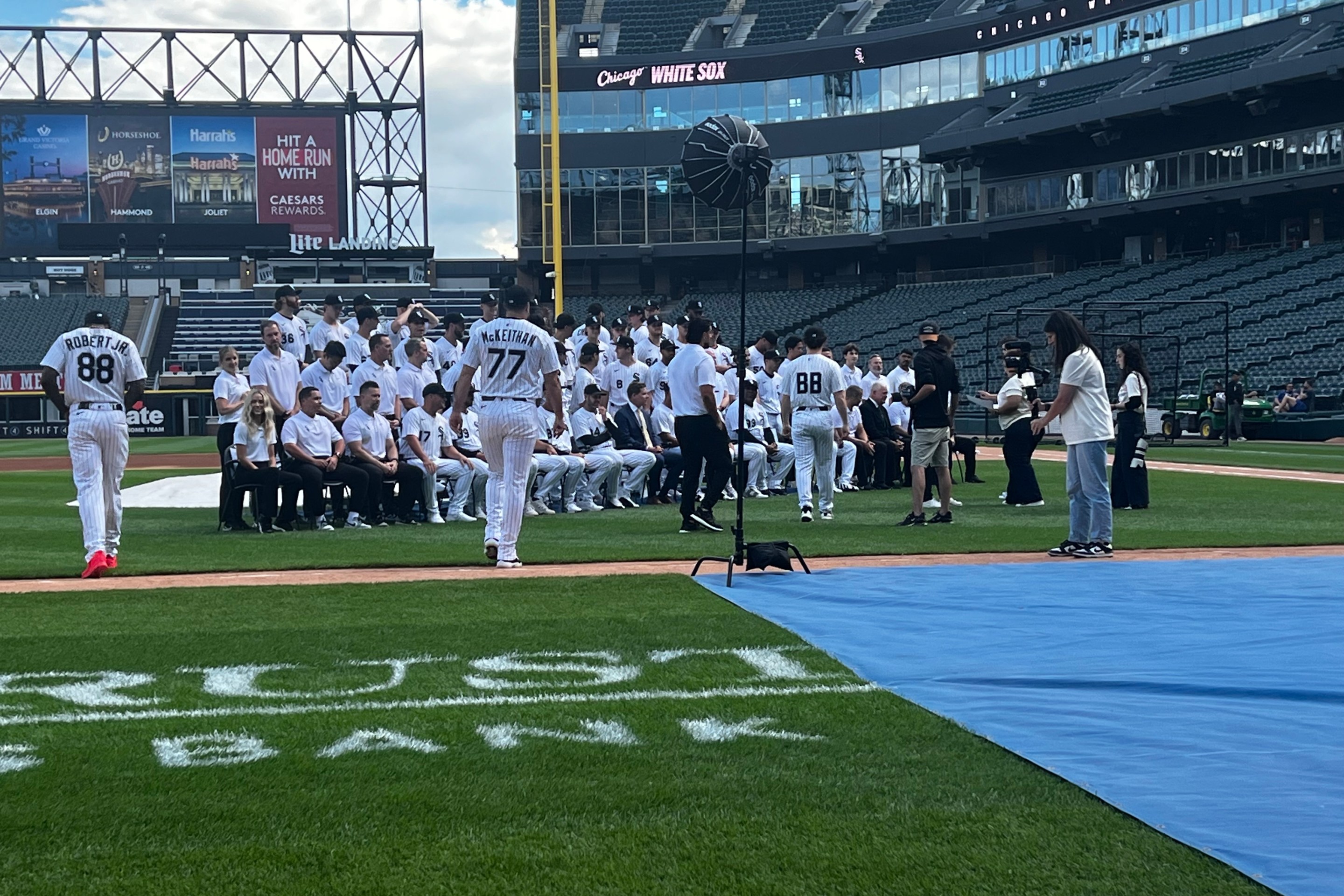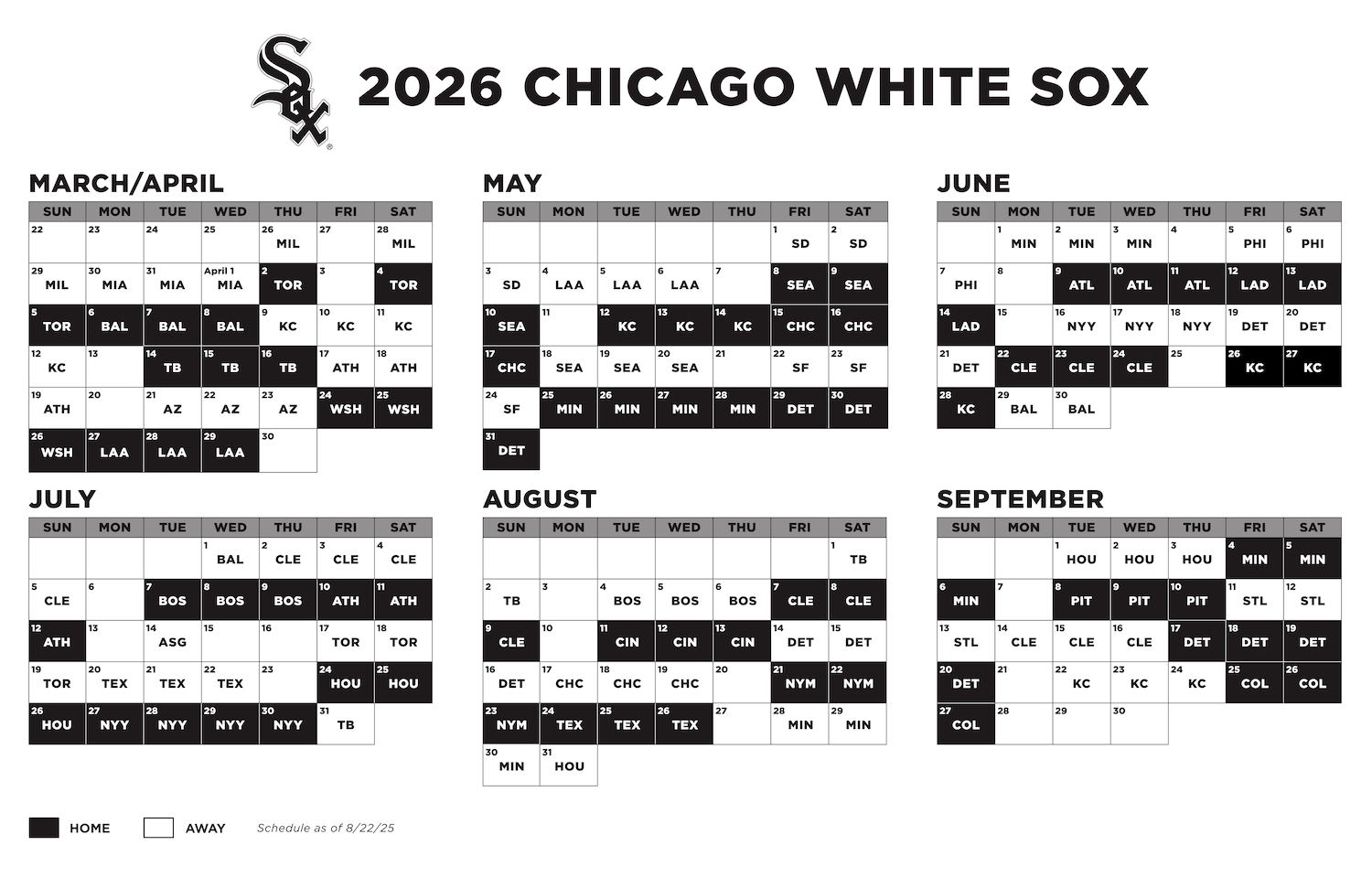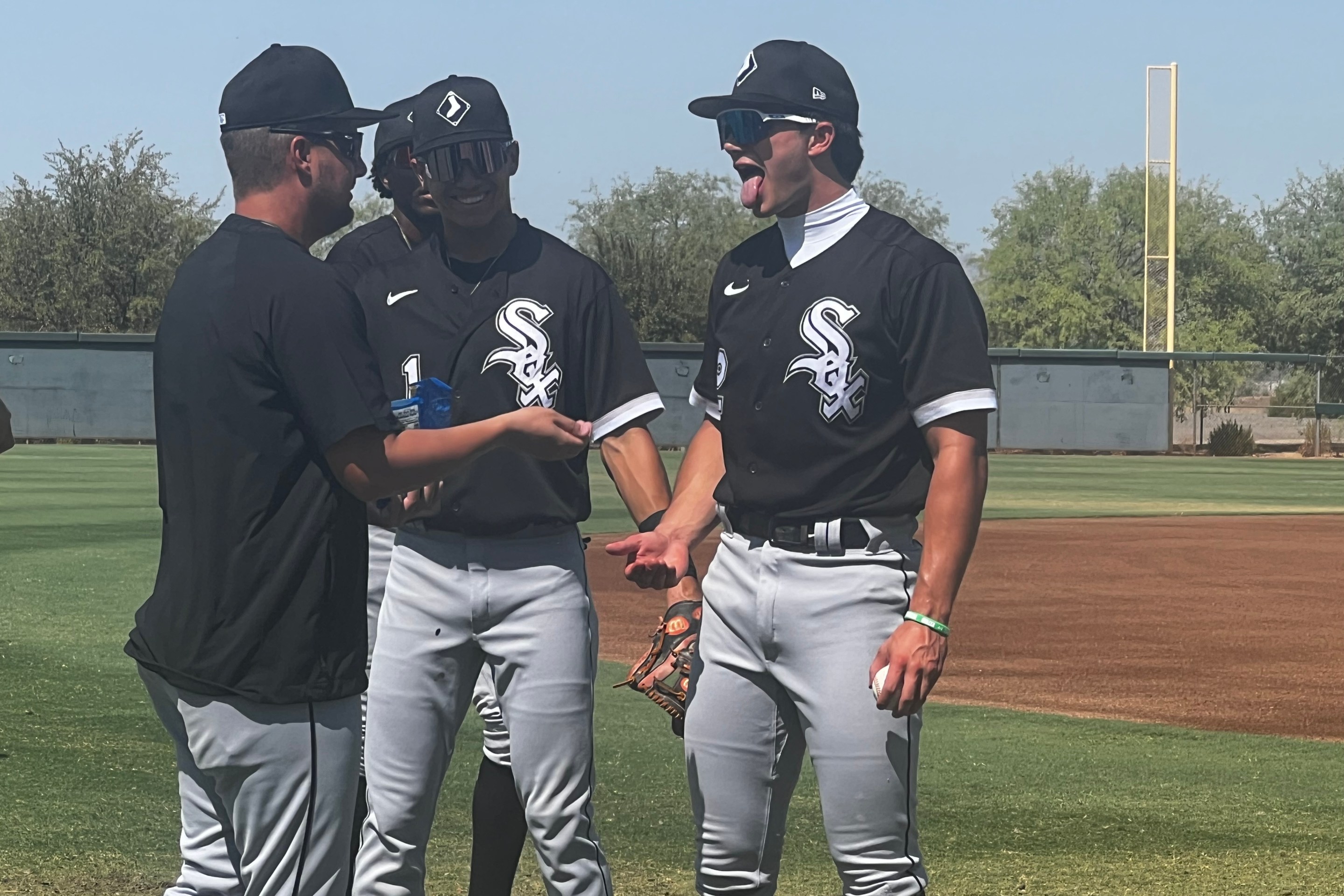If there's a stylistic critique of the trades of the previous White Sox rebuild, other than the club was putting up 100-loss seasons before the core of players they acquired even hit free agency, it's that they did a lot of name-brand shopping. Prospects who were highly-rated on public lists, former first round picks. Even their smaller deals (remember Casey Gillaspie?) banked on established pedigree.
Perhaps Miguel Vargas, a consensus top-40 prospect in the sport before losing his rookie status in the 2023 season, still fits that bill as the headliner in Monday's three-way trade that sent Erick Fedde, Michael Kopech and Tommy Pham out of town. The White Sox need bats of all kinds and plenty of evaluators I spoke to across the league on Monday loved Vargas' hit tool, which has earned plenty of 60 grade (or better) projections on public lists.
But broadly, if this trade goes down as a crucial victory for succeeding years of White Sox baseball, it'll be because their scouting and analysis identified three young players who have their arrow pointing up before the public, and even much of the industry, was appropriately bullish on their games. Since on the day of, rival evaluators were using descriptions for the White Sox package like "light," "weird," or "one of the weaker trade returns for highly sought after players I’ve seen in a while."
The irony is that it was not hard to elicit plaudits for Vargas, who should immediately get the everyday at-bats in the White Sox lineup that were never going to come as readily with the Dodgers. Nor is it hard to get upbeat reports for 19-year-old A-ball infielders Jeral Perez and Alexander Albertus. It's simply that their ceilings and the risky paths that lay ahead for reaching them don't line up with the expectations many had for a package centered around Fedde, who is second in the AL in bWAR among pitchers and only a third of the way through a very affordable two-year deal.
"We're going to get a chance to really get an idea of what he's capable of doing, and we're confident that he's going to be a strong middle-of-the-lineup type hitter for us in the near future," said Chris Getz.
Vargas has better park-adjusted offensive numbers (108 wRC+) in 30 games of disparate major league action this season than anyone on the White Sox active roster, so by all means the near future in which he's a middle of the order hitter should be Tuesday. But it's an atypical middle-of-the-order profile because hope that Vargas will one day post a 20-home run season is rooted in confidence in his hit tool and plate discipline (which has immediately featured fabulously low big league chase rates) producing high-quality contact, rather than his raw power, which is generally seen as average or a tick below.
Even scouts who say that they "always liked" Vargas and that he "could be really good," are unsure of his defensive home, despite plus run times. For a hitting prospect of his caliber, his nomadic defensive history is testimony to the Dodgers depth, but also that he's yet to find one place and stick. Getz made reference to playing Vargas in the outfield corners, where he first started making appearances in 2022 but only begun playing the majority of the time this season, and also said he could man first base or DH. Pedro Grifol made more references to Vargas' past history at second and third base, but at least on the day of the deal, the Sox were more committed to where they'd place him in the lineup everyday rather than his spot on the diamond.
Needless to say, everyone I spoke to would be a lot more confident saying Vargas' bat makes him a guy you win because of rather than win with if he projected to hold down a skill position in the infield, rather than first base. There's been an early hint of platoon splits in Vargas' major league action, with a notably poor performance against right-handed velocity. If that is not something that corrects itself amid the Sox providing everyday at-bats, scouts cautioned that it quickly gets a lot harder for Vargas to provide meaningful impact.
While Perez and Albertus prompted my question to Getz about what their distance from the majors says about the team's return to a contention timeline, one AL scout referenced the subject in terms of Vargas, who eclipsed a year of service time this season and could easily hit arbitration before the White Sox are competing again.
Who is the second-best player in this deal? The White Sox inform that Albertus is expected to miss the rest of the season with a stress reaction in his left tibia. The team said that the injury "is not considered to be serious" and that he'll be ready for spring training, but I think that breaks the tie in favor of Perez.
"Bright future, high ceiling," Getz said of Perez. "He can be an impactful offensive force, plays the middle infield. He's got zone control, and he's got bat-to-ball (skills) and really loves to get after it. The makeup's really strong there."
Perez is also more advanced -- he started the year at Low-A, whereas Albertus was recently promoted -- and provokes more confidence in his ability to stay up the middle, albeit as a "bat-first second baseman." He's been performing, hitting .264/.380/.420 with 10 home runs in 75 games at Rancho Cucamonga and was selected for the Futures Game this year. One scout lauded his "pull-side pop/loft" while another called him an "arrow-up guy." Still, the current contact and batted-ball numbers drive questions about how the offensive profile will hold up when high-level velocity is introduced, and the projection was more "contact-driven solid regular" than "star "to begin with.
A compliment issued to both players is that they've been able to mix in at three infield spots. Albertus is viewed as the toolsier and more projectable of the pair, though it's still seen as a hit-over-power offensive profile, which means it has to be a lot of hitting since many scouts see him ending up at third base. The Aruba native played his way out of the complex league this season by hitting .342/.479/.460, before struggling in 19 games at Low-A (.229/.317/.329), although his zone control largely held up (10 walks, 15 strikeouts) before the injury that will now delay his acclimation to that level.
"He got off to a great start in the ACL," Getz said. "Our scouts were raving about him. Analytically, he looks strong, too."
Something scouts often lament is the removal of affiliates due to MLB limits, which has diminished the quality of play at every level and widened the gap between Triple-A and the majors to a cavernous size. As a result, the ACL is significantly sloppier and more chaotic than what you would typically envision for minor league ball, and making projections off of it are very rough, but one scout praised Albertus for "playing like a grinder" despite having standout tools for that league.
Across the board, it wasn't hard to find scouts willing to say nice things about these players that align with the White Sox's vision for how this package will work. The consensus is simply that both the ceiling, and certainly the risk with Albertus sidelined for the rest of the season, are greater than anyone anticipated given the healthy markets they had for Fedde, Kopech and Pham. It could work, but to borrow the words from one assessment of Albertus, "the gap between present and future is very, very large."
